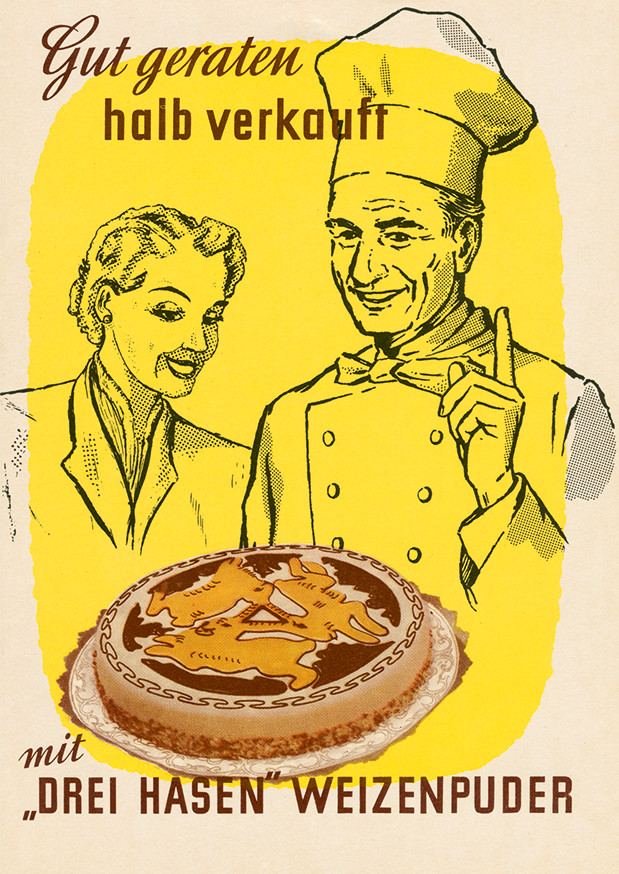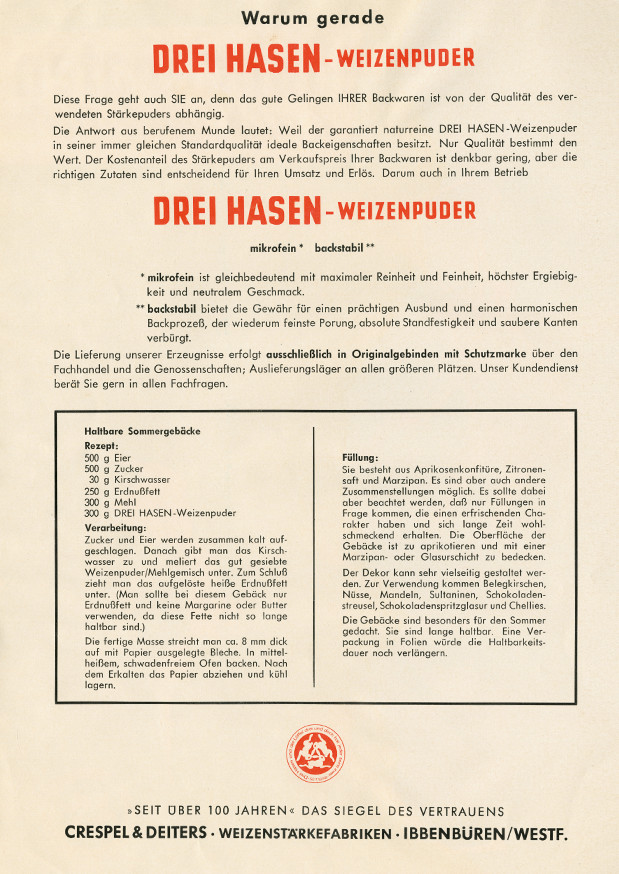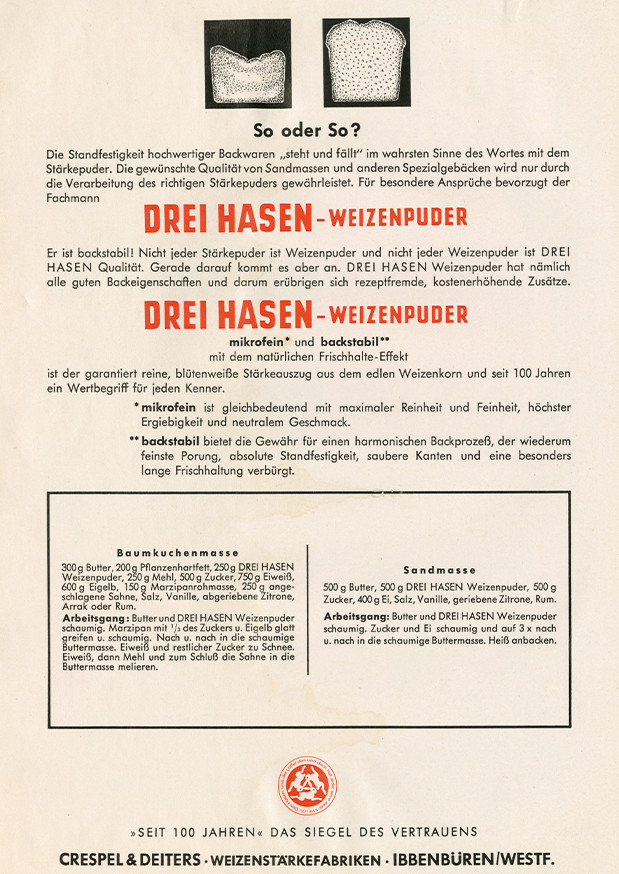Three Hares wheat powder for perfect pastries, almost guaranteeing you’ll sell your baked goods
Bakers bake with Three Hares …
Those who love soft and fluffy cakes or pastries, use Three Hares wheat powder for baking. Already in use in bakeries throughout Germany since the 50s, the starch powder of highest fineness has also remained an insider’s tip among hobby bakers to this very day. However, also well-known brands such as Dr. Oetker, Iglo and Bahlsen use Three Hares wheat powder in their products. Crespel & Deiters has been supplying these large German companies with the innovative wheat powder since the end of the Second World War.
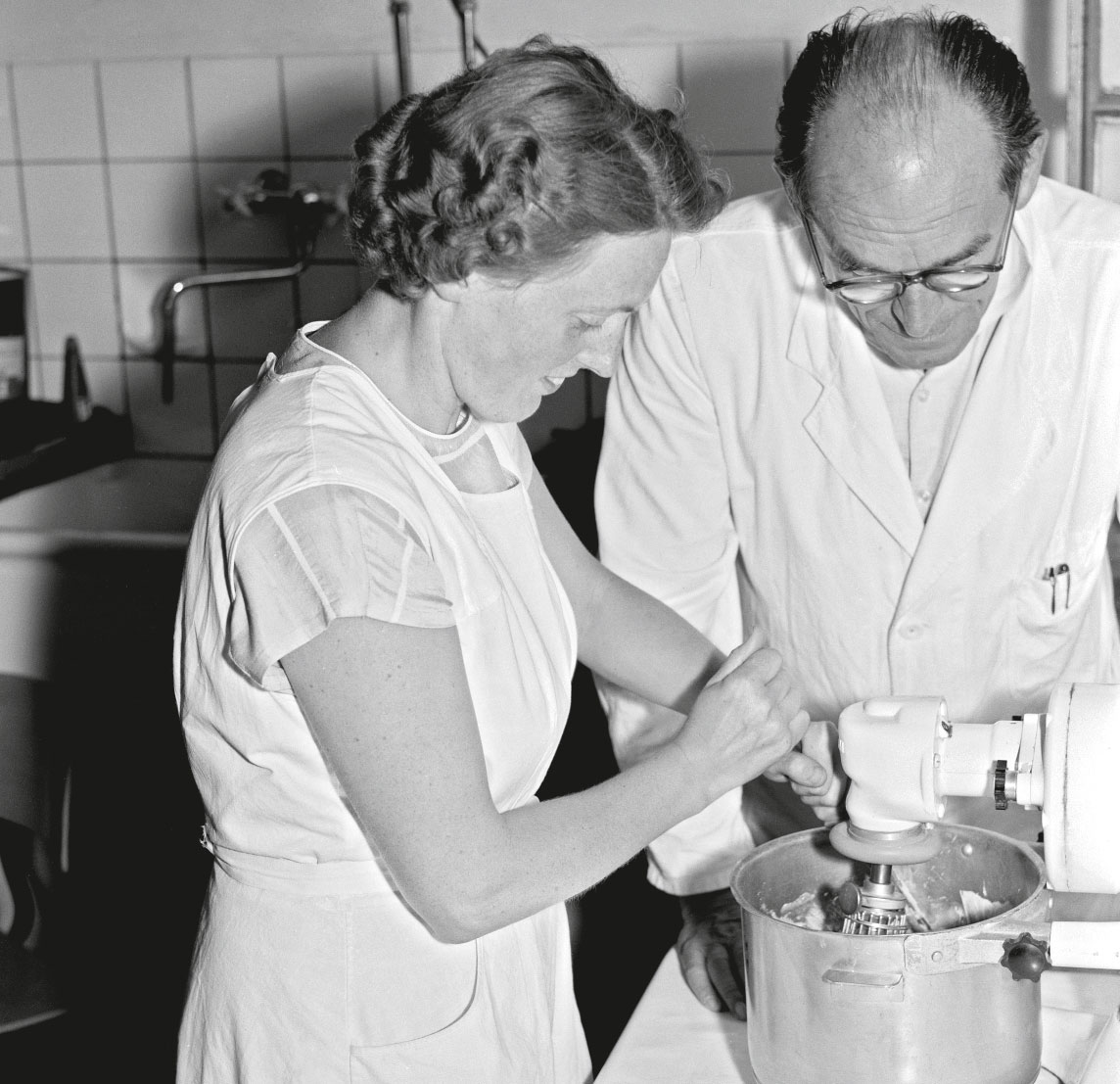
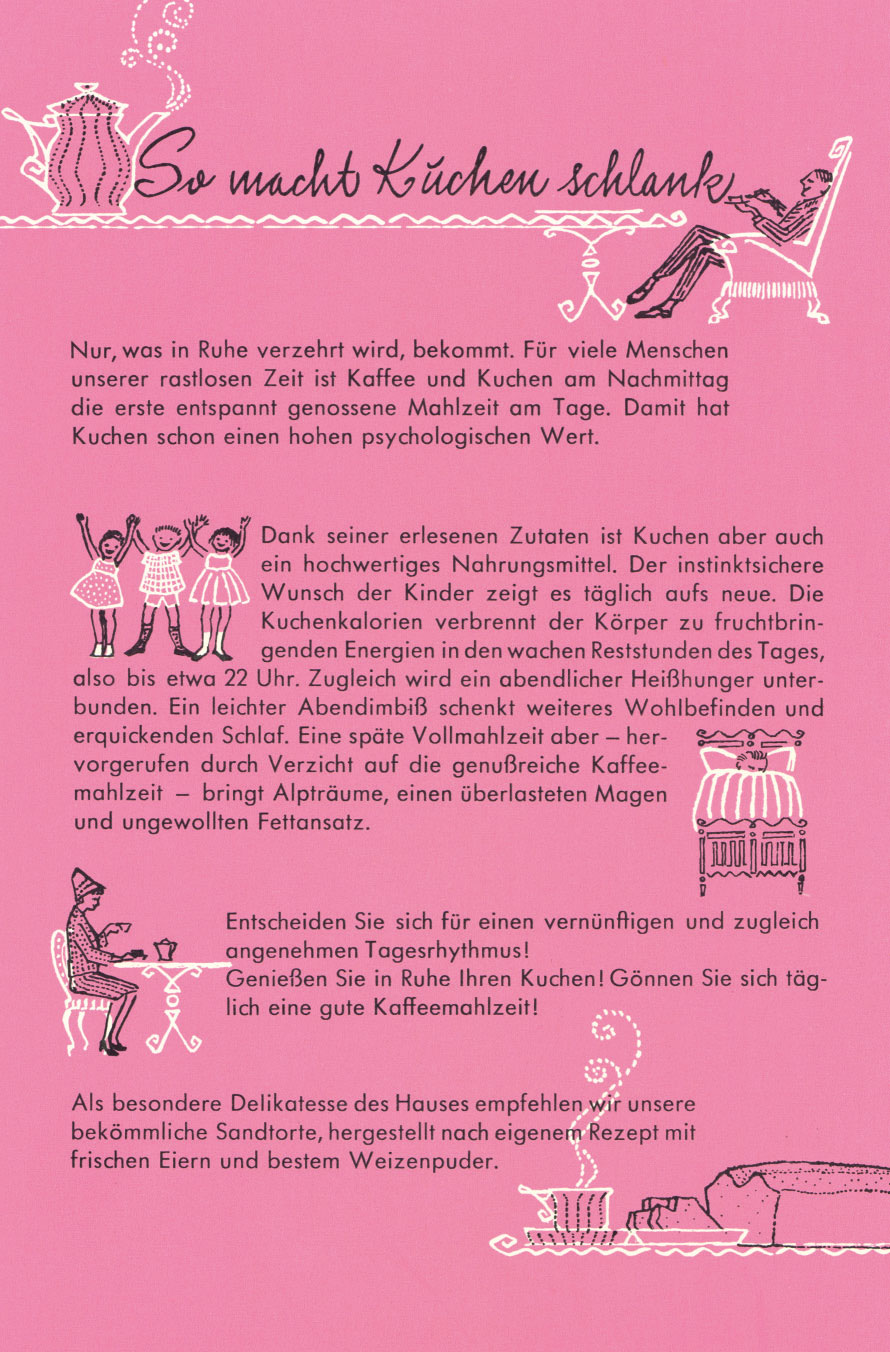
Bakery advertisement for cakes baked with wheat powder, from a time when counting calories was no issue yet.
Germans indulging once again
The nineteen-fifties are characterised by growth, optimism and a pioneering spirit in Germany. After the horrors of the Second World War and the tough time of food rationing that followed, people finally want to treat themselves to something nice once again. With the currency reform in 1948 and the introduction of the Deutschmark, store shelves were once again fully stocked. Thanks to the rapid economic revival and the high gross national product during these years, most people in the country are already doing quite well financially. People can afford quite a lot again – especially food. Now, apart from basic necessities that can be satisfied easily, a certain standard of modest luxury is once again cultivated. Roast is served on Sunday and real ground coffee in the afternoon. Cakes, tarts and pastries are included in the meal plan again. Those who can afford it, purchase these from a bakery or enjoy them in a café, while those who can’t, do their own baking.
Guaranteeing cakes are a sure success: Three Hares wheat powder
Those who enjoy nice and fluffy – yet stable – baked goods, especially sand cake and similar pastries, use Three Hares wheat powder by Crespel & Deiters. Back then the wheat powder was a part of the standard baking assortment in every bakery, and it could be purchased from every well-assorted grocer. And that with good reason. It is starch derived from wheat flour, almost free of fat, fibre and protein, with a water content of 14 %. Thanks to its texture and the contained gluten, the dough base is improved and remains stable. Therefore many baking recipes substitute a significant share of the flour for wheat powder. To this very day, it is the high baking stability with a fluffy final result and the simple use that constitutes the success of Three Hares wheat powder by Crespel & Deiters.
Wheat powder in every package size
In 1957, with its special “Der moderne Laden” [The modern store] exhibition in Cologne, Anuga – the worldwide leading food trade fair – set the course for the triumph of self-service stores. Whereas, in the past, customers had to stand in a queue at the shopkeeper, who would weigh the individual items and pack them for the customer, it was now possible to wander along the aisles in a store and individually pick the desired products from the shelves. This offered producers completely new sales potential but also meant an advancement as regards the product range and offer. Here, in 1960, Crespel & Deiters introduced a small package of Three Hares wheat powder which, from then on, was sold in transparent 250 g bags, also in so-called chain stores. Bakers and buying associations were still supplied with large bags of baking powder.

Filling of Three Hares wheat powder at the Ibbenbürener production site in1958. (Photo: Willi Hänscheid)
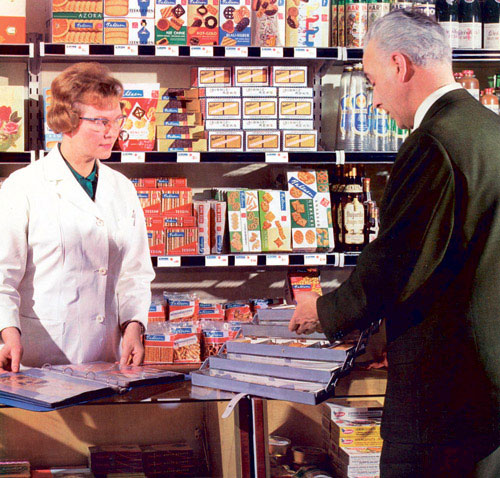
Quite soon nostalgia: From 1957 onward, the small corner store increasingly started making way for the new retail trade self-service concept. Crespel & Deiters already adapted to this trend early on by responding with new product line packaging.
The “little brother” of wheat powder
The wheat powder business is going well for the Ibbenbüren wheat specialist. However, this does not mean the innovative company will rest on its laurels. Instead of relying on past successes, new strategies are constantly developed to further expand market shares. One idea is that of creating a product that replaces flour completely when baking shortcrust pastries. In 1961, Crespel & Deiters develops “dreihasin”. As the “little brother” of Three Hares wheat powder, it supplements the product range with a powder that makes the cake moist and, in addition to this, prevents the cake crust from flaking. The cake remains fresh for longer and additional flour is saved. Probably, though, it is exactly this essentially brilliant basic idea that makes the German housewife feel a little bit insecure. Baking a cake entirely without flour is a tick too innovative for this time. Thus, in the long term, with this product, the sales figures were not as positive as Crespel & Deiters expected them to be. Production was discontinued in 1973.
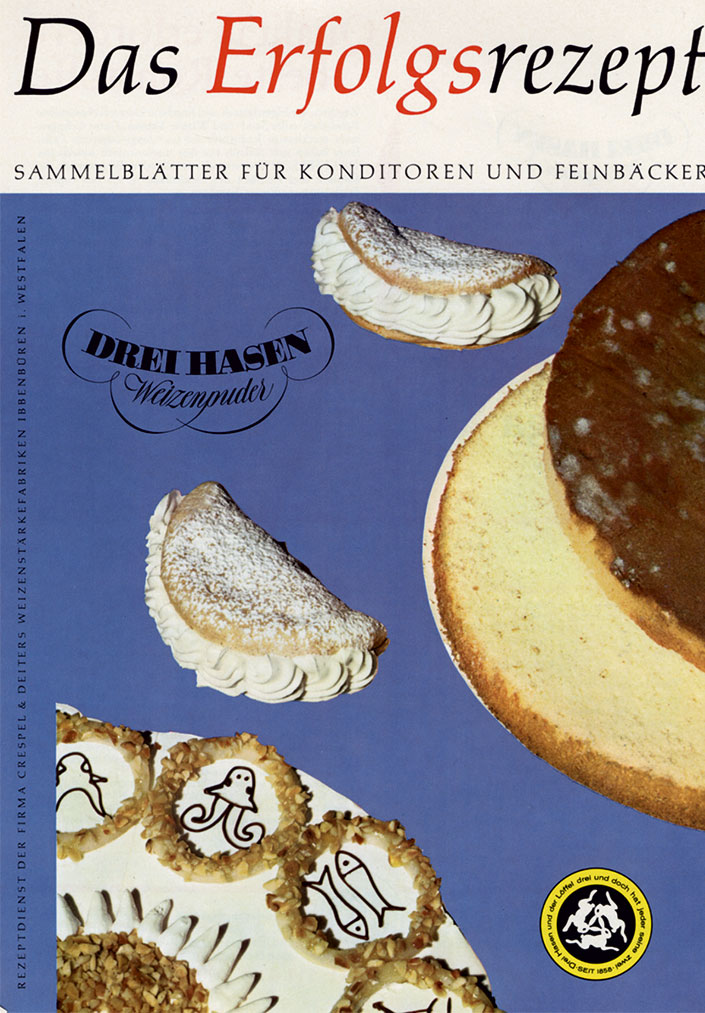
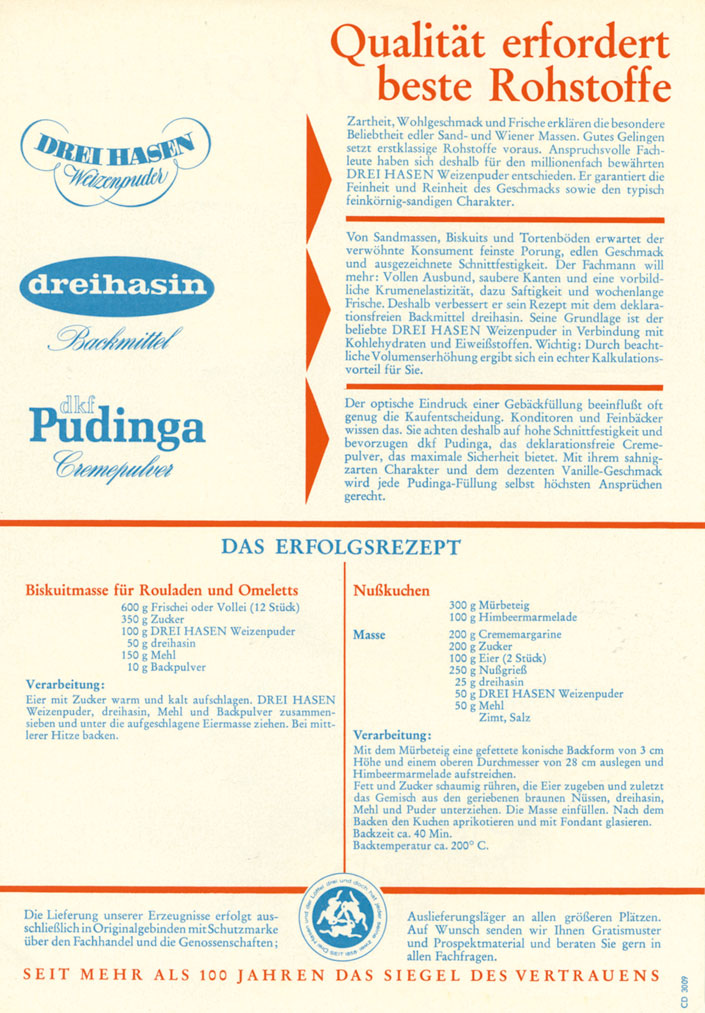
Three Hares wheat powder by Crespel & Deiters is still manufactured in Ibbenbüren to this very day, and the product known by the name of Three Hares wheat starch is distributed via the Loryma food subsidiary. The powder is contained as a constituent part in many recipes to ensure that cakes and pastries turn out well. Crespel & Deiters already issued a recipe book for the baker’s trade in1961. Under the name of “Gut geraten, halb verkauft mit Drei Hasen Weizenpuder” [Three Hares wheat powder ensures perfect pastries, almost guaranteeing you’ll sell your baked goods], the manufacturer has now compiled many recipes and baking tips with Three Hares wheat powder here.
